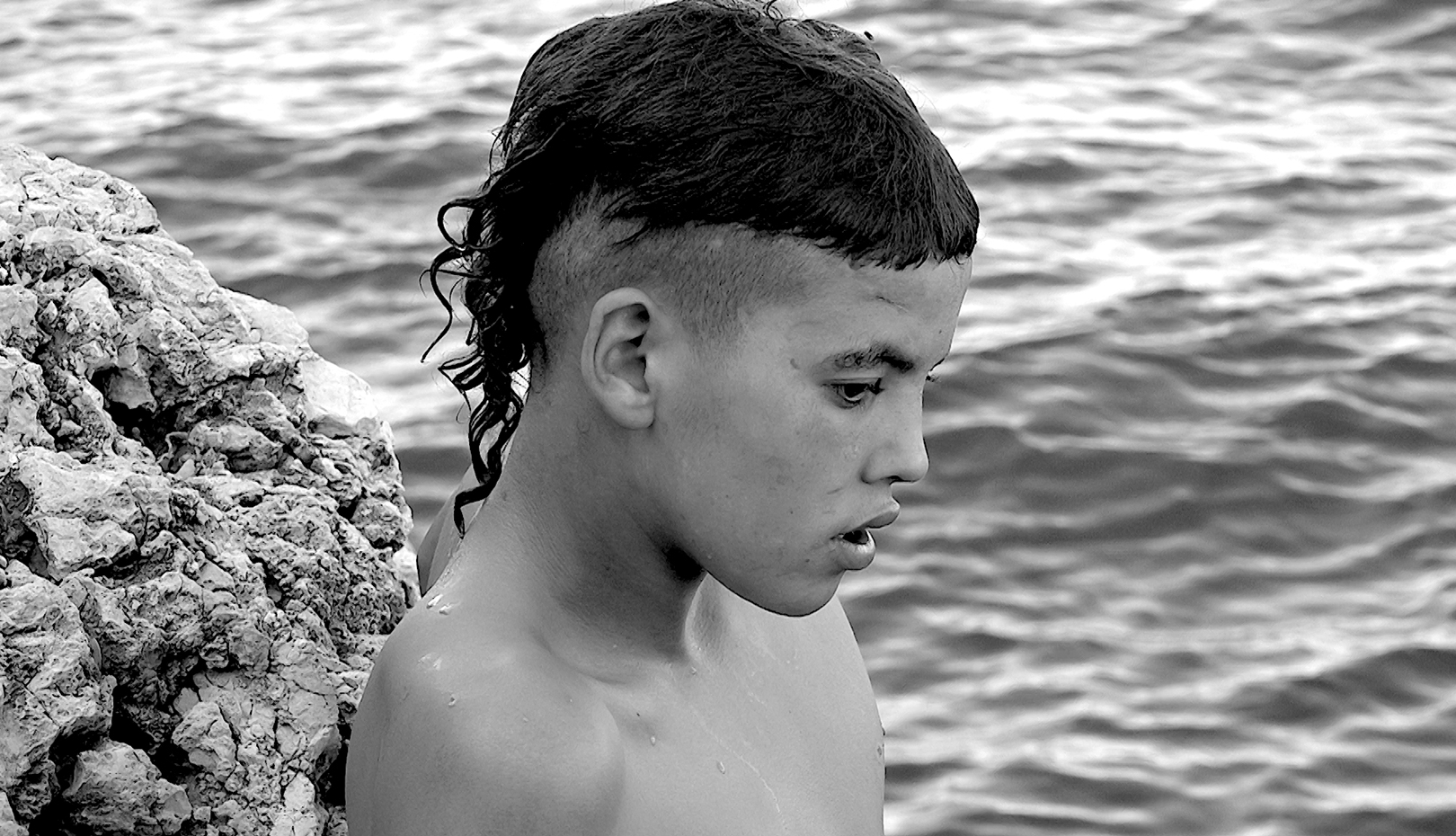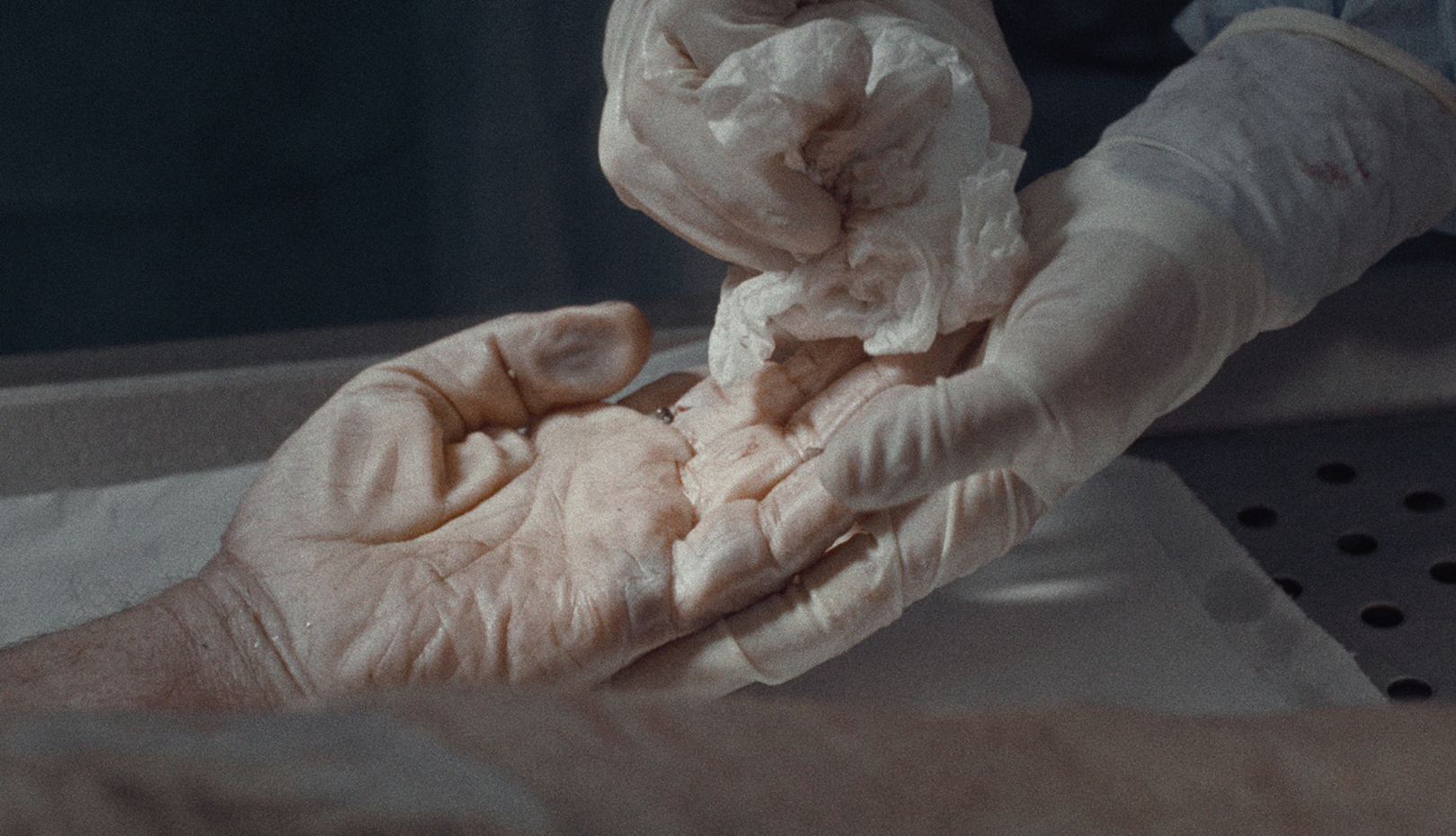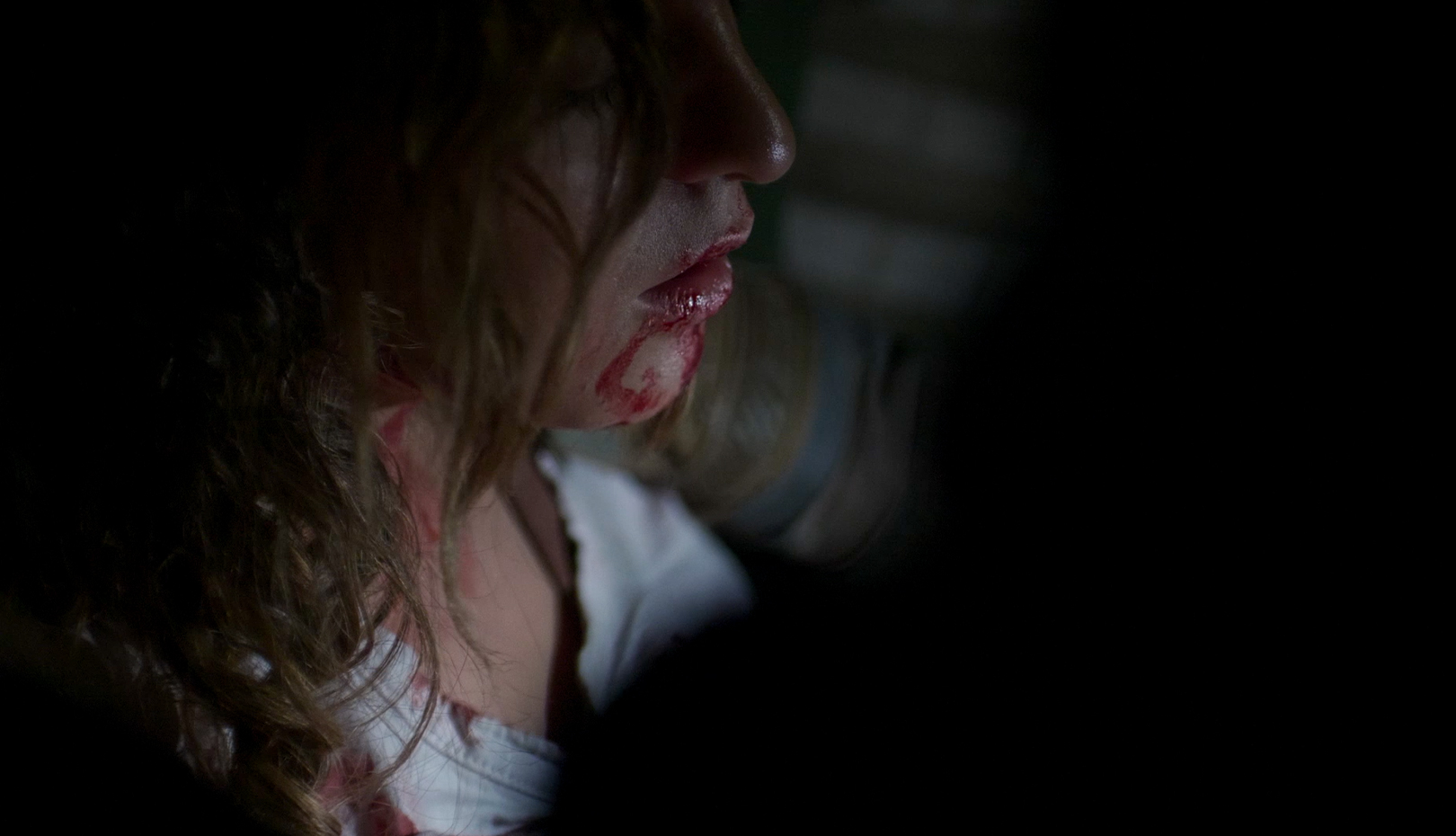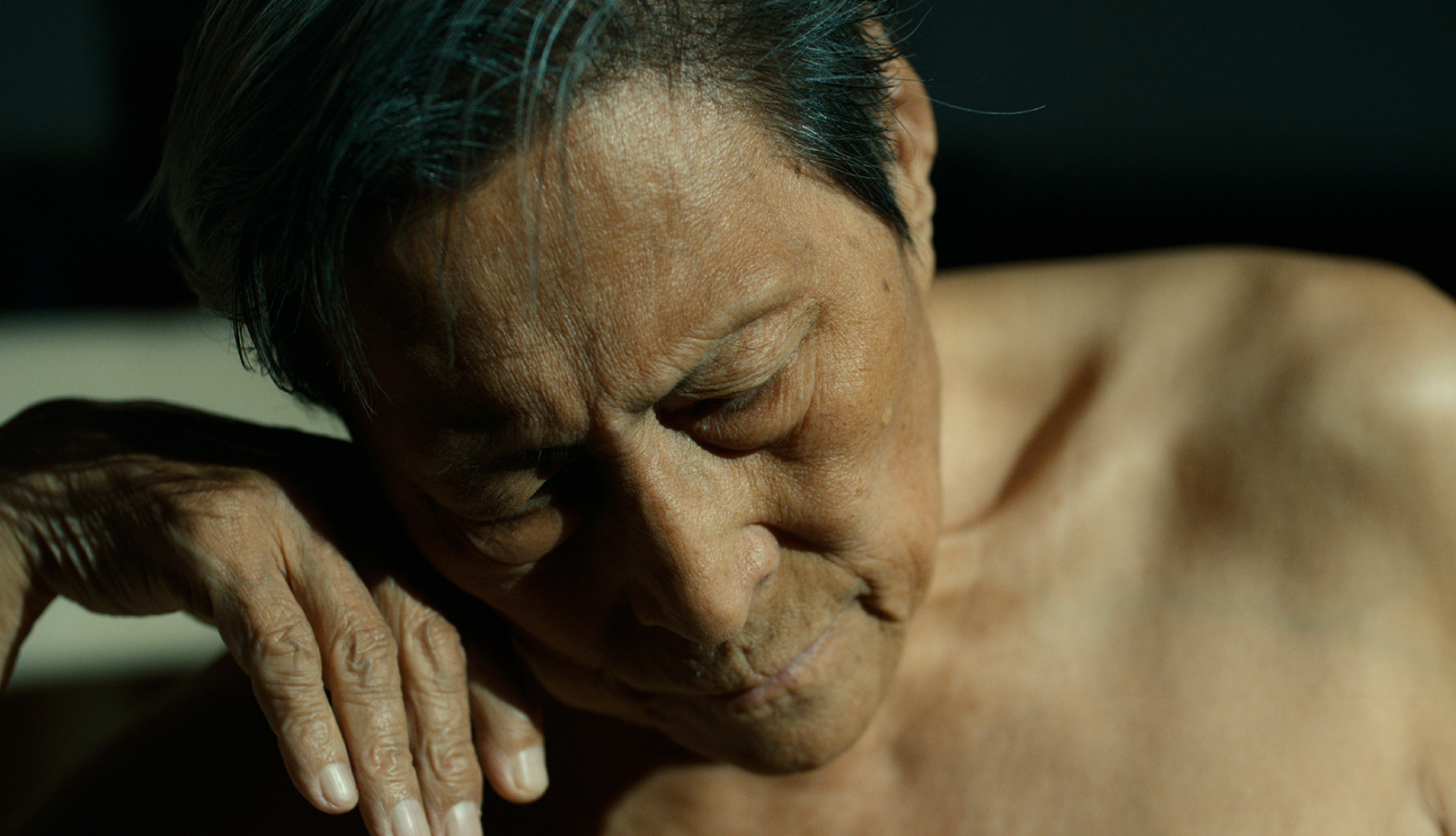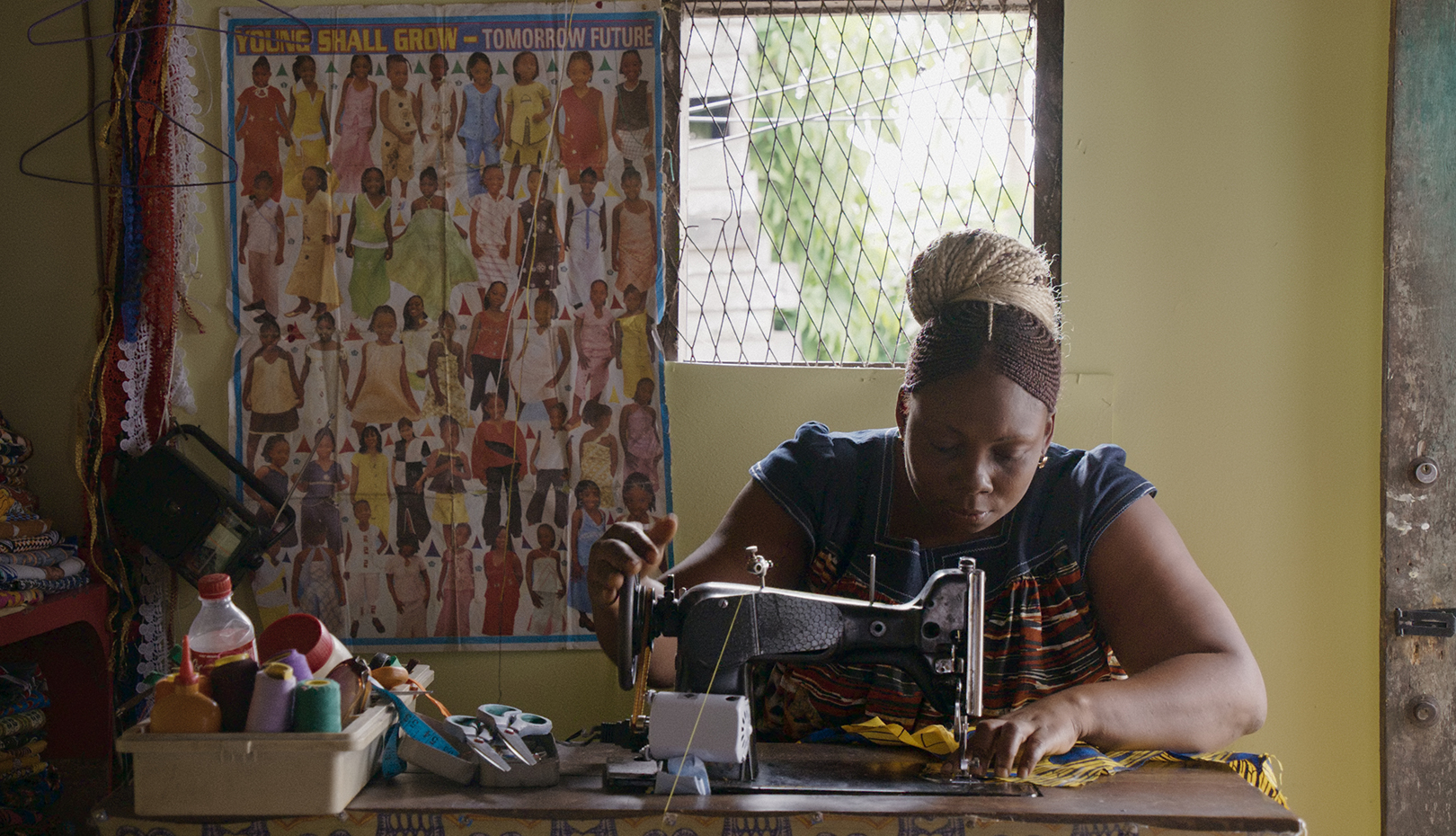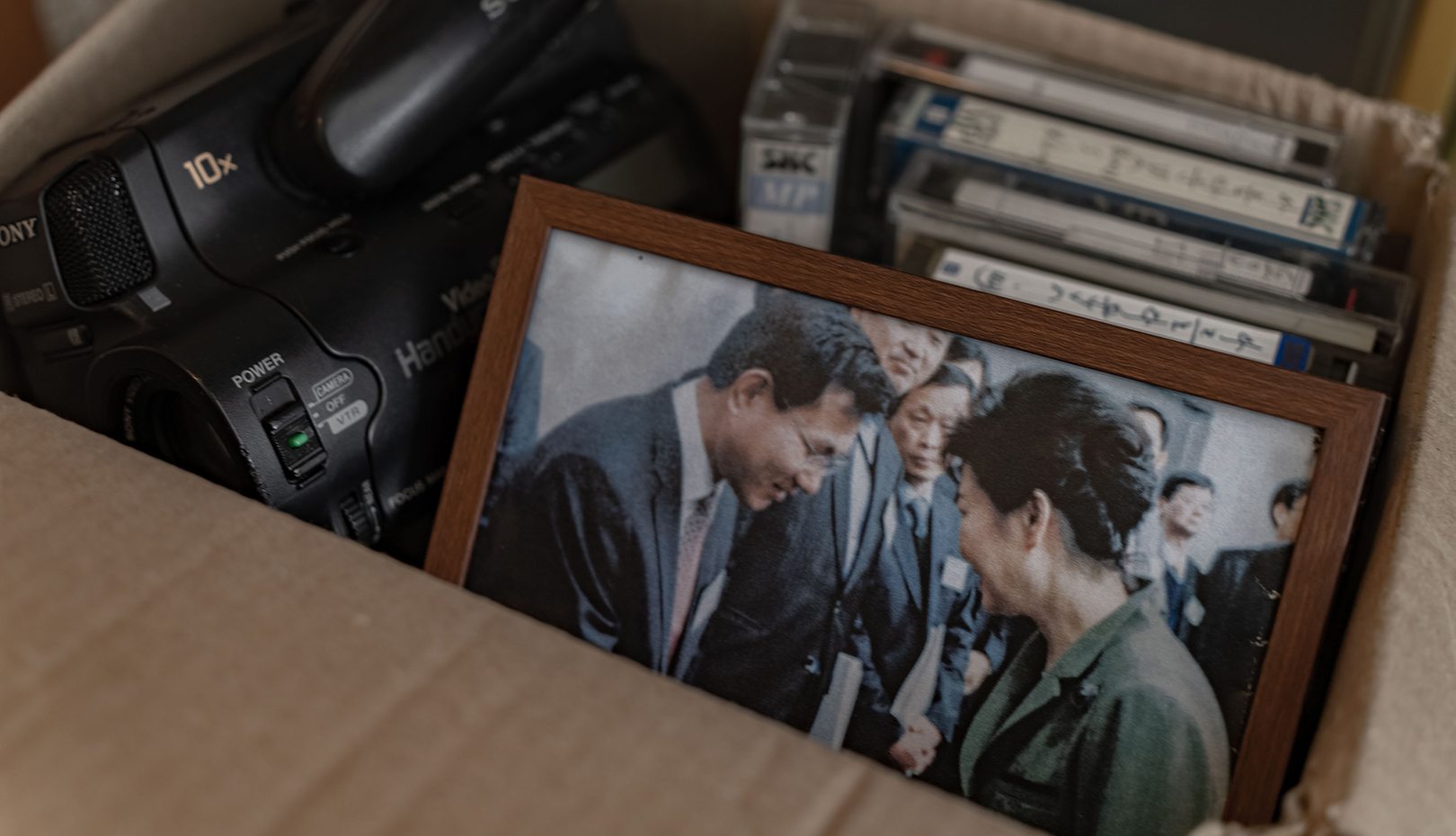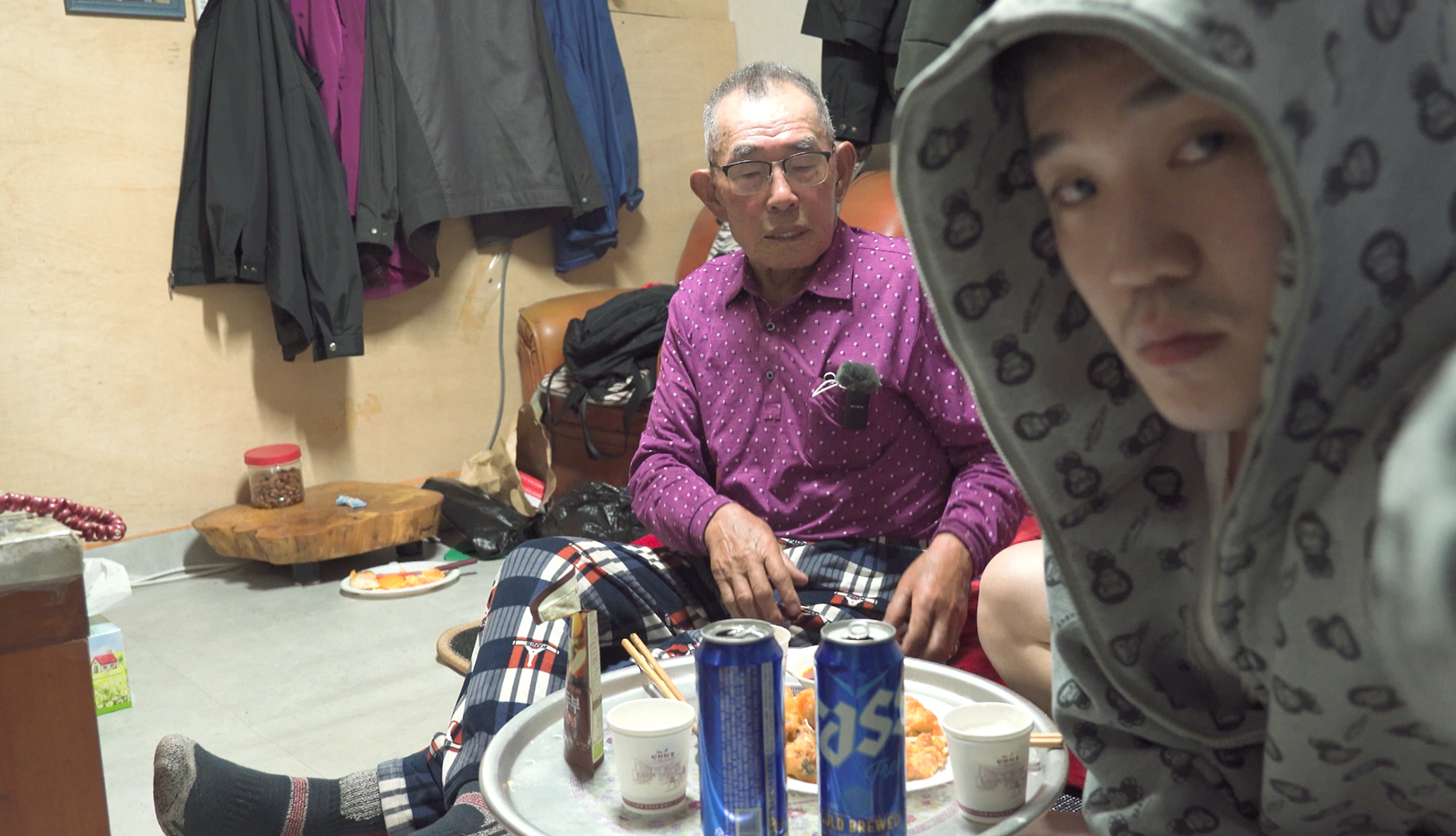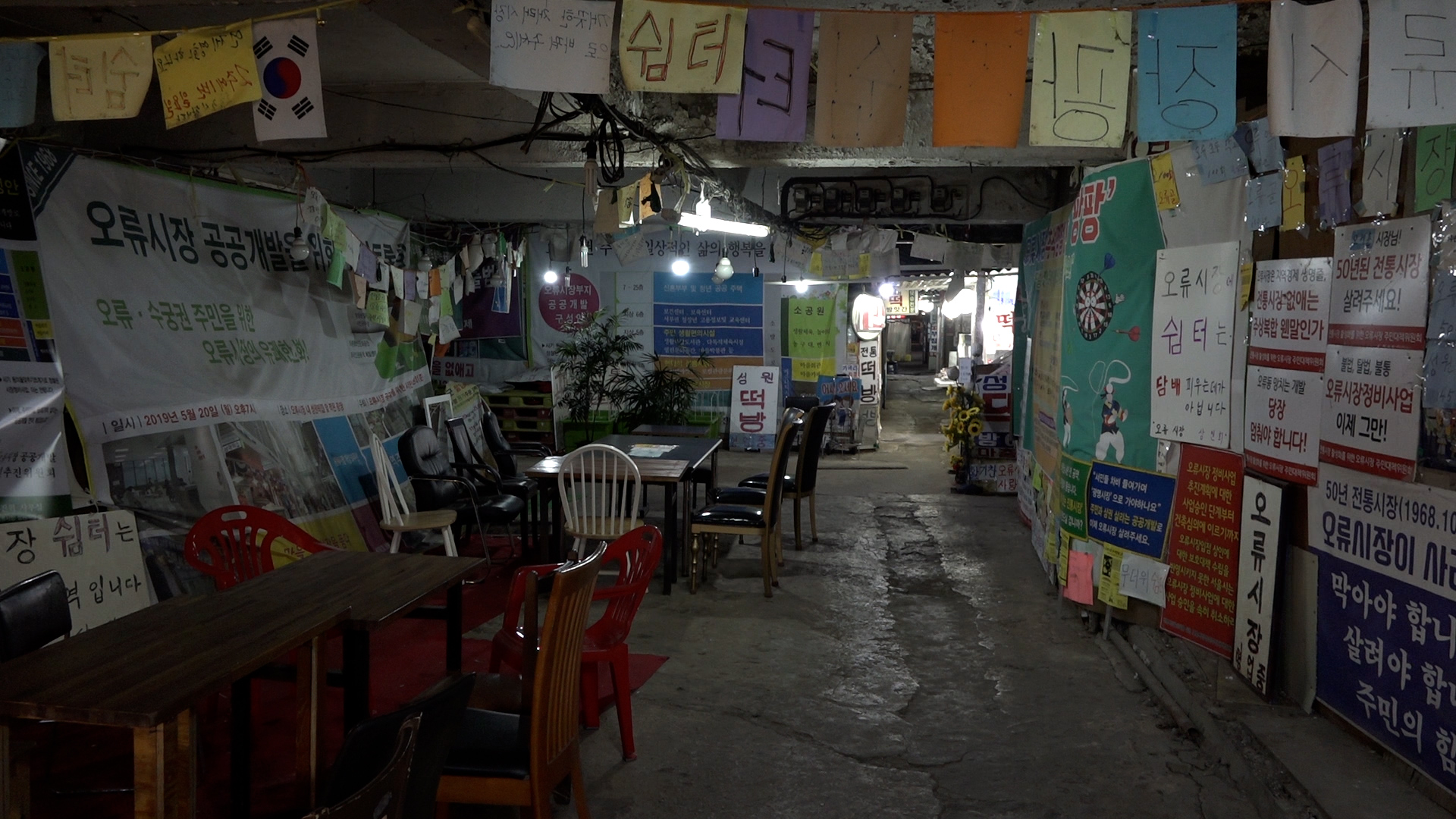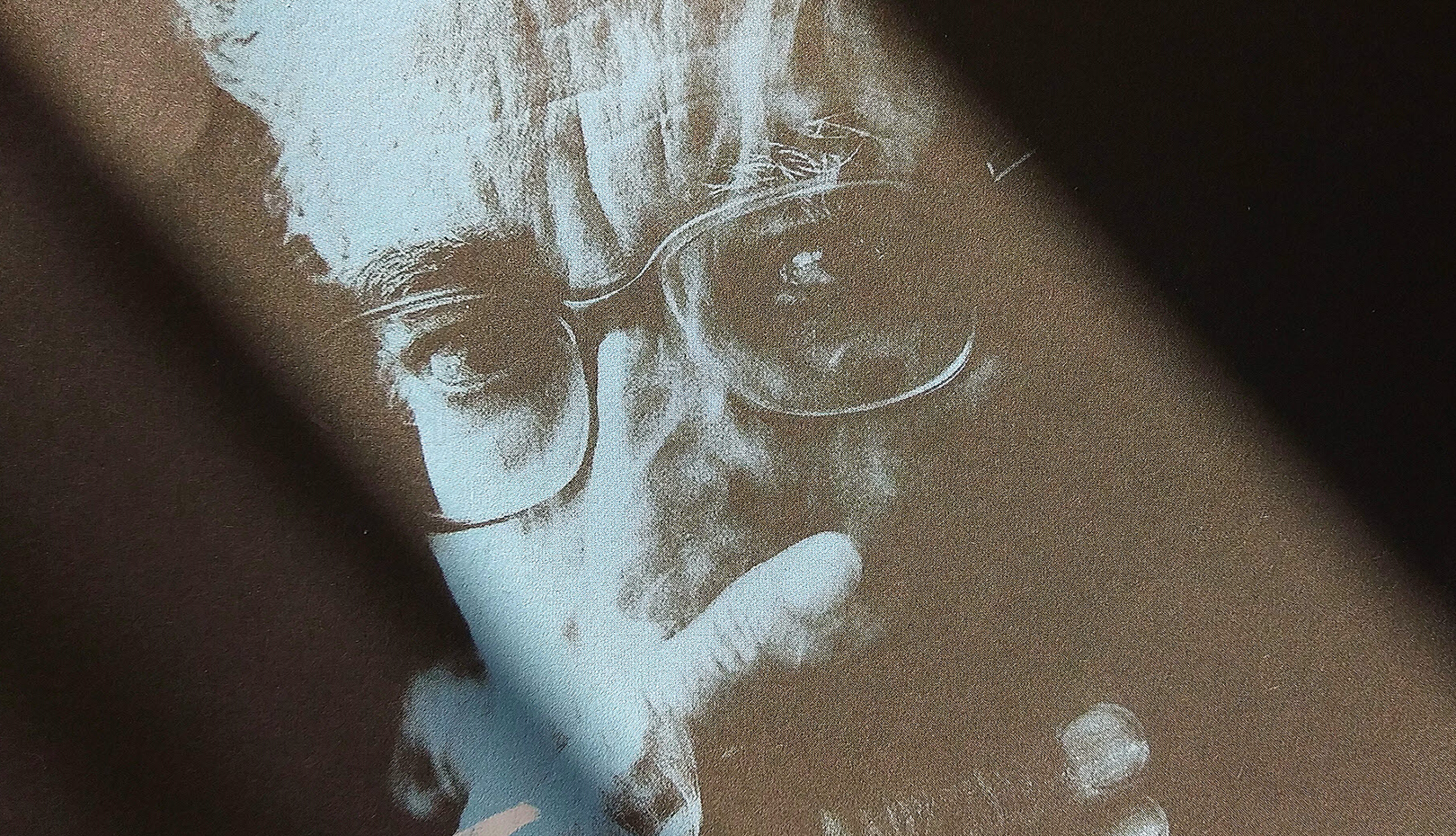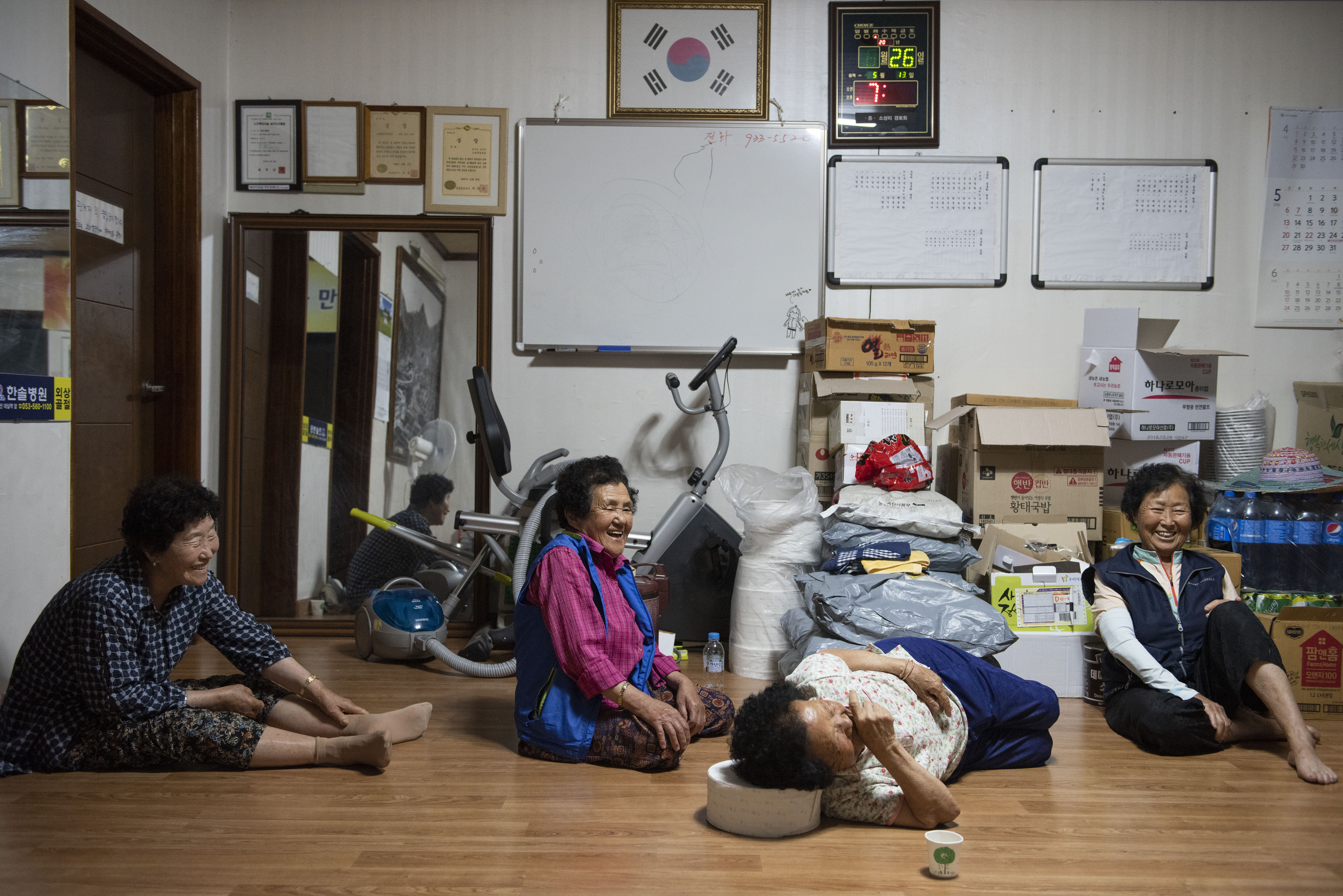International Competition
Grand Prize
Obscure Night-Goodbye Here, Anywhere
- France, Switzerland
- 2023
- 184min
- 12 +
- DCP
- color/black and white
Obscure Night – Goodbye Here, Anywhere is the follow-up to Obscure Night- Wild Leaves (2022), and it’s Part II of Obscure Night series about migrants who try to cross the land border between Africa and Europe. Part I focuses on geopolitical aspects of Melilla, Morocco, and the circumstances of youth there, and Part II pays attention to minors, aged 9 to 14, younger than the characters from Part I. The tones and textures of images got more poetic compared to the previous film. Still, both Part I and Part II show the Arab-Islamic collision, which is interpreted as hostility and confrontation to the West and Western European Diaspora and migration policy. Sylvain Gorge has been exploring the themes that combine poetic images and determination for political ideas. He joins the journey of young boys in the midst of an obscure night and describes the fate of African immigrants working as industrial workers in Western Europe in a 183-minute-long film. He persistently digs into the issues to combine reportage and poetic documentary’s aesthetic methodology smoothly, maintains closeness to the targets, and examines the meaning of places regarded as the area of confrontation and conflict. The scenes with gloomy and dark images also show the existential status of people who stand on the border of beauty and ugliness.
Director
-
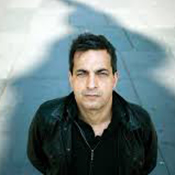
Sylvain GEORGE
Sylvain George was born in Lyon, France. He holds degrees in philosophy, Right and Politicals sciences, cinema for (EHESS. Sorbonne University). He realise since 2006 documentary films on the themes of immigration and socials movments. His work is presented at international festivals where he wins numerous prizes (Best Film Award, the FIPRESCI Prize etc). In 2012, he was invited to the Robert Flaherty Film Seminar.
Credit
Special Jury Award
Pure Unknown
- Italy, Switzerland, Sweden
- 2023
- 94min
- 12 +
- DCP
- color
Italian forensic scientist Cristina Cattaneo is a prolific email writer. She does so to appeal for support for a project that aims to identify the names of those who remain unidentified and lie in state in morgues. She encounters bodies of unknown origin, victims of social blind spots like the homeless and destitute, as well as refugees who attempted to cross the Mediterranean to reach Europe. These anonymous, unidentified deaths vividly reveal the limitations and crises of modern nation-states. As evident from the institutions across Europe turning a blind eye to Christina's plea, it's because basic human rights are neither guaranteed nor present for these non-citizen individuals. The co-directors capture Christina's determined face through graceful editing, delicate music, and camera work that evokes a legal drama, almost as if they were portraying a legal-themed drama. Through close-ups of Christina, they achieve more than just singling out or emphasizing the protagonist. Paradoxically, they reinvigorate the existence of other protagonists within this work, individuals who can only be represented through traces left behind on the coastline or buried underground, individuals whose faces can never be shown. The tension between close-ups and traces in Pure Unknown appeals for action on behalf of those who have lost their identity and are denied even the minimum dignity. It serves as a warning. What kind of future awaits a society that can't even accomplish that?
Director
-
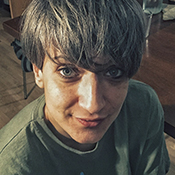
Valentina CICOGNA
Valentina Cicogna, 1984, is editor and screenwriter of several observational documentaries produced and distributed by the main Italian broadcasters and often premiered at important festivals. Pure Unknown is her debut film as director. -
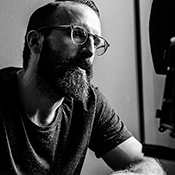
Mattia COLOMBO
Mattia Colombo,1982, is screenwriter, cinematographer, director. His directing debut film, co-written with Valentina Cicogna and edited by her, I Wanna Sleep With You (2015), was selected at Cinéma du Réel. Pure Unknown is his first film codirected with Valentina.
Credit
Jury Special Mention
Bloodhound
- France, Switzerland
- 2023
- 96min
- 15 +
- DCP
- color
Bloodhound means a dog trained to track wounded animals. The film features a blood transport vehicle racing through Paris, realistic scenes of abdominal operations, and images of finding blood. The film uses poetic images of disease, death, contamination, and infection to captivate the audience. A scene of the hunting dog licking the blood from a dead deer is compared with a scene of an irresistible urge for period blood running down the toilet and indulgence for blood. Yamina Zoutat uses a voice-over narration based on her investigations as a journalist to remind people of the importance of blood as an essential element. The relationship between red liquid, and humans, especially women, creates a narrative line that links diverse people. The film reflects on the metaphysical meaning of blood running through blood vessels and the power of liquid as rescue, critical wounds, and death. The film is also characterized by its unique texture, covering from documentaries to horror, found footage, and surrealism. Especially, the film combines the contrasting images allegorically by using images of a swan throwing its long neck into the water, a blood bag transported for a transplant operation, and close-ups of people involved in the massive terror attacks.
Director
-
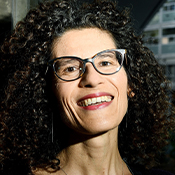
Yamina ZOUTAT
Algerian-Italian, born in Switzerland. Yamina Zoutat first worked for more than ten years as a court reporter in Paris. Laundry (2010) is dedicated to the mothers who do the laundry for their sons sentenced to a long prison term. Her first feature film, 6999 Doors (2017), an intimate exploration of the Court House in Paris was awarded at Visions du Réel. Her latest work Chienne De Rouge (2023) premiered at Cinéma du Réel, Visions du Réel and got Audience Award at Documenta Madrid.
Credit
Frontier
Grand Prize
Man in Black
- France, USA, UK
- 2023
- 60min
- 18 +
- DCP
- color
Director
-
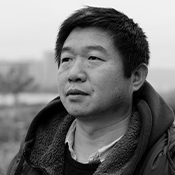
WANG Bing
Born in Xi’an, in 1967, Wang Bing studied photography at the Lu Xun Academy of Fine Arts and cinematography at Beijing Film Academy. Discovered in 2003, West of Tracks, an enormous documentary work of more than 9 hours, has garnered great success internationally. Acclaimed by critics and recognized as a major artist, documentary maker and film director, he has been honored by retrospectives of his oeuvre in major museum. He is also active in video installation, fiction film and photography.
Credit
Jury Special Mention
Mambar Pierrette
- Belgium, Cameroon
- 2023
- 93min
- 12 +
- DCP
- color
The director engaged in conversations with her seamstress cousin, and these discussions about her reality form the foundation of the film. While describing scenes during the filming process, the seamstress often suggested alternative ideas that she wanted, and the director states that she took the seamstress's suggestions to incorporate her own reality into the director's fiction. This approach marks a solution that the director found while navigating the power the camera-wielder holds within the shooting relationship, establishing boundaries. The mutual understanding, respect, and affection that the director and the seamstress, Pierrette, as the two co-authors of this film, hold for the characters' world seamlessly integrate the complex significance that sewing brings to Mambar, allowing it to be a medium through which she showcases her skills, takes care of her family, soothes her neighbors, and connects with the world. Sewing becomes an expression of Mambar's passionate commitment to preserving her own life, perhaps because this quiet passion serves as the central theme. Despite the misfortunes that befall Pierrette and the challenging realities surrounding her, they cannot overwhelm Mambar. Amid the multitude of issues Cameroon and societies worldwide must address—welfare, poverty, child-care, education, relationships—Mambar's life serves as a conduit for awakening these concerns, and addressing them should begin with learning the sturdy rhythm that Mambar's straightforward, continuous journey creates.
Director
-
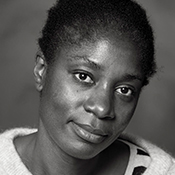
Rosine MBAKAM
Rosine Mbakam grew up in Yaoundé in a popular neighborhood that nourished her imagination as a filmmaker. After working for 3 years at STV in Douala as a director and producer, she joined INSAS, a Belgian film school. In order to be independent, she founded her own production company Tândor Productions. She directed 4 feature-length documentaries that were selected in the most important film festivals in the world. She is also a teacher and researcher at KASK in Ghent.
Credit
Korean Competition
Features Grand Prize
K-Family Affairs
- Korea
- 2023
- 89min
- 12 +
- DCP
- color
Director
-
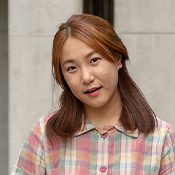
NAM Arum
Nam directed Pink-Femi (2018), which tells the story of her and her mother's experiences during the #MeToo movement in Korea. During the period of closed borders due to COVID-19, she collaborated with Japanese directors to co-produce an AR-based documentary titled Teleporting (2021). Patriotic Girl (2023) marks her debut feature documentary.
Credit
Shorts Grand Prize
The Shooters
- Korea
- 2022
- 31min
- 12 +
- DCP
- color
The Shooter interviews and listens to the historical experience of a grandfather who lost his family during the ‘Jeju April 3’, avoided suppression, and joined a punitive expedition to survive. The interview content and interview settings make The Shooter more interesting. The most important factor in the interview setting is a table with drinks and snacks. The different house places with drinks and snacks act as a main factor in building a more private and close relationship. The cameras are often placed away from other objects in order to encourage an interview that focuses on matters that are often omitted in the relationship between the interviewee who requests testimony and the interviewer who answers. As a result, The Shooter successfully provides valuable testimony on the ‘Jeju April 3’.
Director
-
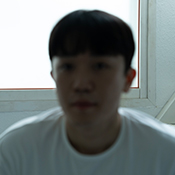
YANG Jihoon
Born in South Korea. Yang Jihoon captures the unique grain of people categorized before the camera, revealing what gets overlooked in image production and consumption processes. His previous work The Shooters (2022) won the Grand Prize in Korean Short Competition at the 15th DMZ Docs, garnering attention.
Credit
Special Award
Prize for Social Solidarity
Oryu Market
- Korea
- 2023
- 65min
- 12 +
- DCP
- color
For some, Oryu Market is a place of survival, a cultural base, or a hunting ground for development. The documentary Oryu Market documents 10 years of this traditional market, and it was made by director Choi Jong-ho, who is a documentarist and a media activist for the local radio broadcasting station, Guro FM. Oryu Market broadcasts a radio program named Paper Airplane (which also features in the film), which interviews a couple who has been running a rice cake shop for a long time and acquaintances of the couple to trace their history of struggle against the redevelopment. Oryu Market is a bit different from the ordinary documentaries about gentrification. It mainly focuses on how the traditional market that once led to heyday of the local market area is about to disappear due to the redevelopment project for building apartment buildings. This shows that Oryu Market has a property of essay documentaries that explore the value and nostalgia of vanishing places. In the opening scene, the camera starts from the dark market streets and then captures the market stores turning on lights and brightening up the dead spaces. Choi highlights the history and atmosphere of the space to point out the values of old things that cannot be pushed away for the sake of speed and efficiency. Oryu Market shows the power of observational documentary by paying attention to the issue and tracking down its evolution persistently.
Director
-
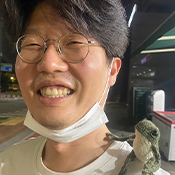
CHOI Jong-ho
Choi initiated his documentary filmmaking within a college broadcasting club. His interest in human stories and spaces deepened after directing My Place (2015), a film documenting the forced eviction of school clubs from the campus. Since 2016, he has shifted his focus to Guro-dong, Seoul, where he has been capturing the essence of Oryu Market through his documentary work.
Credit
Prize for Outstanding Aesthetic Achievement
Jean-Luc Godard
- Korea
- 2023
- 61min
- 12 +
- DCP
- color/black and white
Jean-Luc Godard takes the form of asking questions to Jean-Luc Godard, who was an iconoclastic vanguard. The film takes a structure of alternation with Goard’s films and questions by the first-person narrator, shots of coastal sedimentary rocks, cliffs, sea, waves, and plants, and texts and books explaining Godard. The subheading, “Verbal and Non-Verbal Worlds,” summarizes the traces of Godard, who described the irony of trying to escape from the fetter of language but being forced to say it in language in Impossible Film. Jean-Luc Godard displays Goodbye to Language (2014), The Image Book(2018), Film Socialism (2010), Vivre Sa Vie (1962), Sauve Qui Peut (La Vie)(1980), Our Music (2004), and In Praise of Love(2001) in order to ask questions arising from each film. Director Kim Eung-su borrows Godard’s styles of deconstructing and reassembling the existing format and mainly uses transitions of colors and a combination of montage, texts, and images. Jean-Luc Godard is the message of a giant figure who made everything possible in the film to the narrator who imagines the impossible. It is recommended to watch Jean-Luc Godard with Godard’s last film, Trailer of the Film That Will Never Exist: “Phony Wars” , to be screened at this year’s Essay section.
Director
-
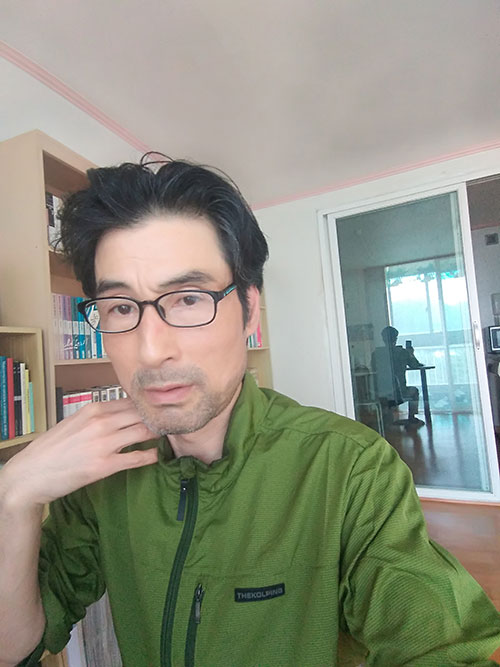
KIM Eungsu
Born in South Korea, 1966. the director has crafted a diverse filmography spanning 24 works, beginning with the feature film Time Lasts in 1996. His oeuvre encompasses both fiction and documentary, notably including the 2007 documentary The Past is a Strange Country and the 2023 essay film Jean-Luc Godard.
Credit
Prize for Emerging Documentary Filmmaker
Our Sunny Paradise
- Korea
- 2023
- 85min
- 12 +
- DCP
- color
In the fall of 2016, Seongju County's Soseong-ri was chosen as a candidate site for the THAAD missile defense system, and by 2017, the deployment was forcibly executed in Soseong-ri. Director Kim Sangpai, who participated in the "Take Action Through Media in Gimcheon/Seongju" project to document the residents' fight against the THAAD deployment, later chose to settle in Soseong-ri. As a resident of Soseong-ri, he cultivates garlic and beans while capturing the everyday lives and events of the village, which houses around 80 elderly residents. Echoing the legend of Japanese independent documentary filmmaker Ogawa Shinsuke, Director Kim Sangpai's core practice is founded upon respect and affection for the community. His filmmaking doesn't rush to convey the images of struggle, instead, he observes scenes of village residents making acorn jelly and watermelon pickles together, feasting, and sharing meals. Through such interactions, the elderly residents share their life stories with him. As an observer, participant, and attentive listener, he extracts the essence of the community, which has been a fundamental element of Korean independent documentary filmmaking for a long time. The scene where an elder who formed an exceptional bond with the director hands him money, urging him to live properly, resonates more deeply than the refined words of any philosopher or intellectual.
Director
-
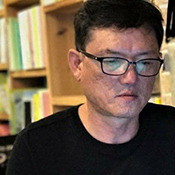
KIM Sangpai
Kim took part in the project as a Media in Gimcheon/Seongju (2017), which documented the deployment of the THAAD missile defense system in Soseong-ri, Seongju, in 2017. He resided in the area until 2019 to chronicle the events in Soseong-ri. In 2020, he relocated to Gangneung to pursue his film endeavors. In 2022, he produced and released Dandelion Youth (2022) as a contribution to the Newstapa, a Korean independent newsroom under the project Witnesses.
